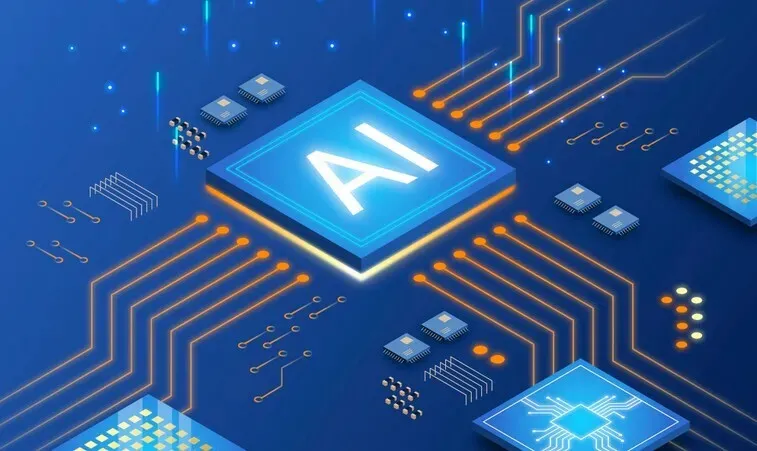(Clipart Korea)
“The fast development of synthetic intelligence is inflicting a requirement shock for reminiscence semiconductors,” SK Group Chairperson Chey Tae-won instructed journalists on the SK AI Summit 2025, held at COEX in Seoul’s Gangnam District on Sunday.
Dismissing considerations of an AI bubble, Chey declared that “the demand for reminiscence chips will proceed.”
Expectations are excessive for a semiconductor “tremendous cycle” as calls for for chips develop with the AI funding growth. This AI-triggered tremendous cycle differs considerably from earlier chip cycles, with specialists figuring out three most important variations.
The primary is the shortened recession cycle. US-based multinational funding financial institution Morgan Stanley assessed in a September report titled “Reminiscence Supercycle” that the reminiscence cycle has grow to be shorter and extra gradual.
The reminiscence semiconductor business, which encompasses DRAM and flash reminiscence, incessantly experiences cycles of growth and bust. Reminiscence chips are a generic product mass-produced by firms. Skyrocketing costs result in surges in provide, triggering cutthroat competitors. When demand dies down, costs and earnings plummet.
Morgan Stanley identified that, previously, the reminiscence chip winter lasted for round one to 2 years whereas booms continued for 2 years at most, exhibiting that cycles had been accomplished each two years. Nonetheless, the newest reminiscence chip winter began within the final half of 2024 and continued for eight months till early 2025. This means that the business as a complete has gone by means of a large-scale restructuring through which it doesn’t linger in recession and as an alternative rapidly rebounds.
What prompted this shift within the business? Korea Scores, a enterprise valuation service, factors to the drawn-out oligopoly of the three reminiscence chip giants as a key issue. Companies which have dominated the business, comparable to Samsung Electronics, SK Hynix and America’s Micron, are not fascinated about taking part in video games of hen and at the moment are centered on reasonably controlling provide.
As the businesses grow to be cautious of competitors with one another, there’s much less threat of getting a surplus of reminiscence chips. The three firms have, previously, lowered manufacturing throughout the reminiscence winter in 2023. The present reminiscence provide scarcity is, to some extent, an intentional phenomenon orchestrated by these firms.
Demand, alternatively, has by no means been increased, as massive US tech firms are racing to speculate astronomical funds in infrastructure, fearing that they might be left within the mud within the AI race.
In contrast to chip booms led by shopper items — the widespread proliferation of private computer systems within the Nineteen Nineties, the launch of smartphones with Apple’s iPhone in 2007, and the enlargement of the cloud business in 2017 — this upswing is seeing not solely tech giants but additionally governments worldwide diving headfirst into AI investments. For this reason many analysts imagine that all the taking part in discipline has modified.
The Financial institution of Korea’s “Latest Financial Developments” report for October identified that the present chip growth was triggered by the AI revolution and is “using on company infrastructure funding demand and help on nationwide ranges. This upturn will doubtless proceed, resulting in industrial convergence encompassing each manufacturing and repair industries.”
AI fashions are creating from generative fashions, comparable to ChatGPT, to reasoning fashions, that are able to logical thought, and bodily AI. These developments will maintain the demand for semiconductors.
Nonetheless, this solo reminiscence growth additionally raises considerations. As soon as the South Korean financial system expands its reliance on semiconductors, it may well create the phantasm that all the financial system is flourishing.
Semiconductors accounted for 1 / 4 of South Korea’s whole exports from January to September in 2025. As soon as we take semiconductors out of the equation, we will see that exports are stagnating. We additionally can’t rule out the likelihood that fluctuations within the reminiscence cycle may trigger macroeconomic indicators like exports and the present account stability, in addition to the inventory market and tax revenues, to oscillate.
“We’re at the moment being hoodwinked into believing that the demand for reminiscence chips as a complete is exploding,” assessed a semiconductor professional working in academia who requested anonymity.
“This phantasm is brought on by calls for for the substitute of present enterprise servers, compounded by provide shortages ensuing from the shift in reminiscence manufacturing strains from general-purpose to AI reminiscence (HBM). Whereas the upswing within the reminiscence cycle brought on by AI isn’t going to abate quickly, there’s a threat of being too optimistic when inspecting the market and overestimating its potential,” they stated.
Others recommend that Korea wants to hunt out new areas for development.
“The fact is that our financial system is holding on because of the AI chip tremendous cycle,” stated Kwon Nam-hoon, the president of the Korea Institute for Industrial Economics and Commerce.
“We have to make a severe effort to uncover and construct up not simply semiconductors for cutting-edge industries, however manufacturing-based AI and robotics know-how,” Kwon suggested.
By Park Jong-o, employees reporter; Kwon Hyo-jung, employees reporter
Please direct questions or feedback to [english@hani.co.kr]

